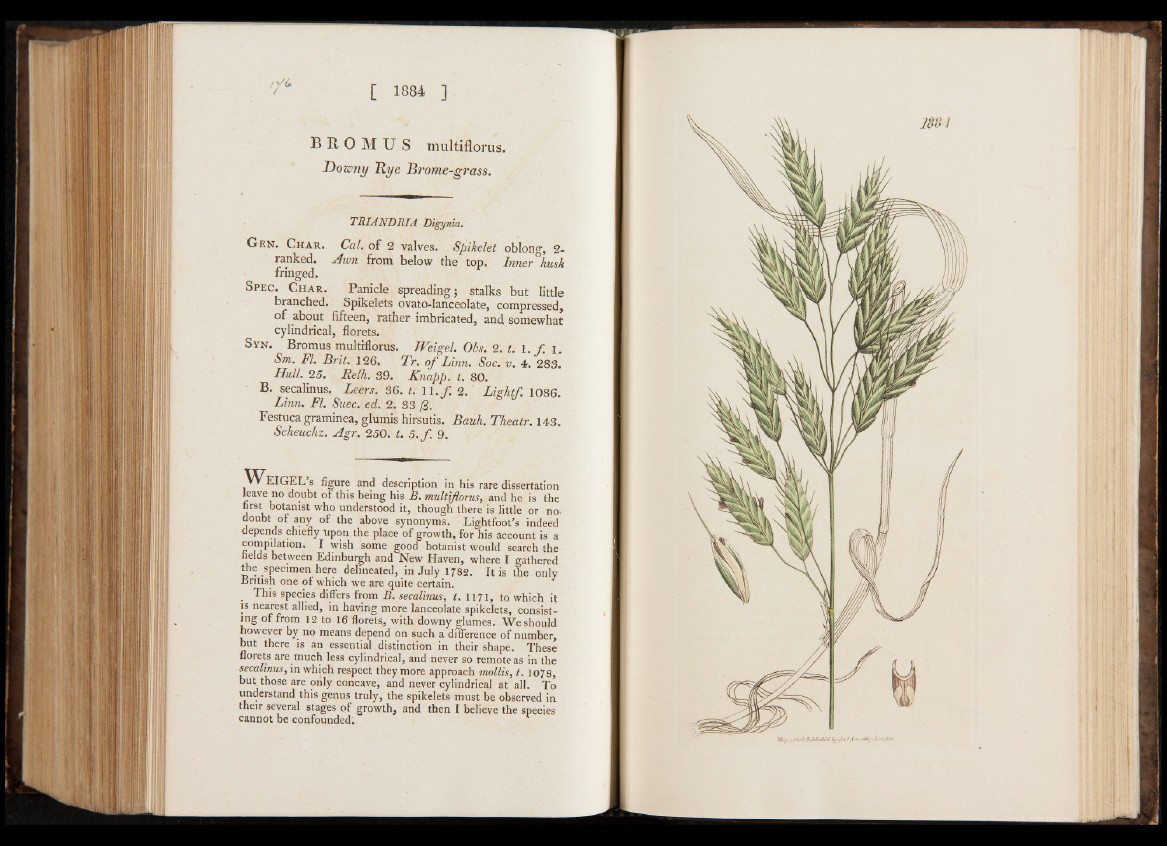
'f* [ 1884 ]
B R O M U S multiflorus.
Downy Rye Brome-grass.
TRIANDRIA Digynia.
G en. C har. Cal. of 2 valves. Spihelet oblong, 2-
ranked, Awn from below the top. Inner husk
fringed.
Spec. Char. Panicle spreading; stalks but little
branched. Spikelets ovato-lanceolate, compressed,
o f about fifteen, rather imbricated, and somewhat
cylindrical, florets.
Syn. Bromus multiflorus. Weigel. Ohs. 2. i 1. f . l.
Sm. FI. Brit. 126. Tr. o f Linn. Soc. v. 4. 283.
Hull. 25. Relh. 39. Knapp, t. 80.
B. secalinus. Leers. 36. L 1 1 . ƒ 2 . ' Lishtf. 1086.
Linn. FI. Suec. ed. 2. S3 ß .
Festucagraminea, glumis hirsutis. Bauh. Theatr. 143.
Scheuchz. Agr. 250. t. 5 . f 9.
W E I G E L s figure and description in his rare dissertation
Jeave no doubt ot this being his B . multiflorus, and he is the
first botanist who understood it, though there is little or no.
doubt of any of the above synonyms. Lightfoot’s indeed
depends chiefly upon the place of growth, for his account is a
compilation. I wish some good botanist would search the
fields between Edinburgh and New Haven, where I gathered
the specimen here delineated, in July 1782. It is the only
British one of which we are quite certain.
. This species differs from B . secalinus, t. 1171, to which it
o f from 12 to 16 florets., with downy glumes. We should
is nearest allied, in having more lanceolate spikelets, consisting
howeyer by no means depend on such a difference of number,
but there is an essential distinction in their shape. These
florets are much less cylindrical, and never so remote as in the
secalinus, in which respect they more approach mollis, t. 1078,
but those are only concave, and never cylindrical at all. To
understand this genus truly, the spikelets must be observed in
their several stages of growth, and then I believe the species
cannot be confounded.
188 J